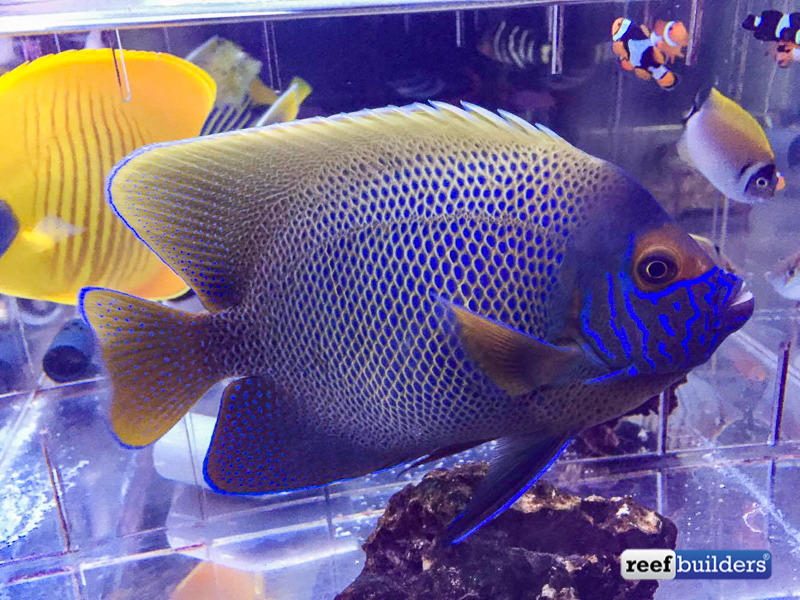The hybrid blueface angelfish recently revealed by premier Japanese aquarium retailer Vessel 1997 is a very nice treat for angelfish and rare fish aficionados. We don’t get to see too many hybrids of large angelfish species, and when we do it’s usually a well documented crossing, but this hybrid blueface angelfish is something special.
Hybrids of large Pomacanthus angelfish species are uncommon, and they are even more rare in the Euxiphipops subgenus containing blueface, majestic, and sixbar angelfish. There’s at least two good documentations of hybridization among these species, between the blueface and majestic angelfish, and the blueface with a sixbar angelfish.


Thankfully since a good image exists of a clear hybrid between the blueface and majestic angelfish, we can deduce that this specimen is most likely a cross between the blueface and sixbar angelfish. Due to its overall somber color, elongated fins, and especially its relatively large size, this hybrid blueface angelfish probably had Pomacanthus xanthometopon and P. sexstriatus parents.
In this rare combination between the two related species you can see how similar both fish truly are to each other. The majority of the body coloration of this specimen isn’t deviating too much from the dominant appearance of the blueface genetics, but it’s in the face where we see the most interesting result of this cross. The blue girdle of lines below the eyes and on the gills is about half as pronounced as you would expect in a full-blooded blueface angelfish, but with a network of lines that is all its own.

This is probably one of a just a handful of blueface angelfish hybrids documented over the last few decades, but interestingly this specimen was collected in the well-trodden region of Bali, Indonesia. This specimen is well into early adulthood but nowhere near the average size for a mature blueface or sixbar angelfish.
Sixbar angelfish start out life very pale in coloration so perhaps this trait is what is allowing the blueface appearance to shine through. However sixbar angelfish become much darker with increasing size and age so it will be very interesting to learn how this fish changes color as it grows. And since sixbar angelfish are known to live up to forty years in captivity, we could be seeing more of this fish for a very long time. [Vessel 1997]







